Few subjects create more controversy in the hunting world than the subject of baiting when hunting big game. On the surface, the use of bait can seem unsporting. After all, all you have to do is throw a bunch of bait on the ground, sit back, nock an arrow and start shooting at defenseless animals lured unnaturally into your sights. Right? At least, that’s what opponents of baiting argue. In my experience, it’s much more complicated than that.
Baiting Bears and Hogs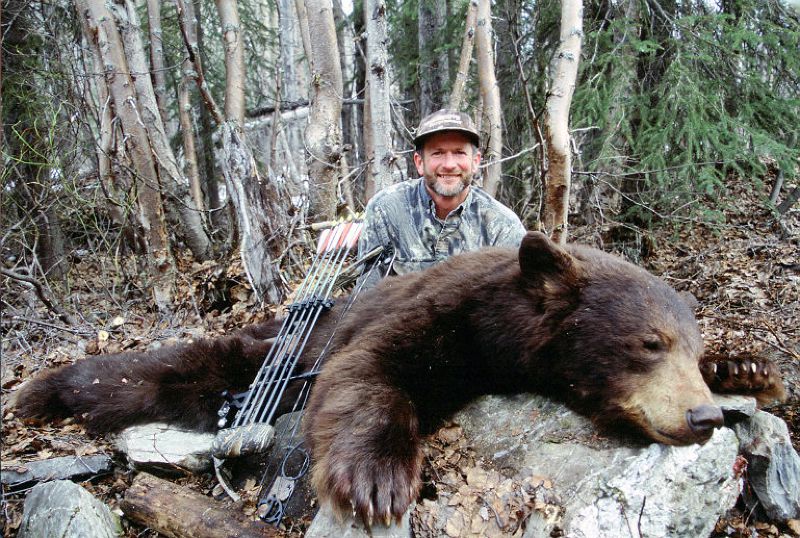
I’ve been hunting black bears over bait for decades. When I lived in Alaska, I ran my own bait sites, and I’ve hunted countless other outfitted bait sites in western Canada as well. When I was young and inexperienced, I thought bait hunting would be a slam dunk. How naive of me! I have been on more than one bait hunt where I did not get a shot at a mature bear in a week’s time. And I quickly learned that running your own baits requires a massive amount of time and work, and just like everything else, it takes time and trial and error to find good “spots” that will regularly produce. I actually found it less time consuming to go glassing, locate a bear and sneak up on it.
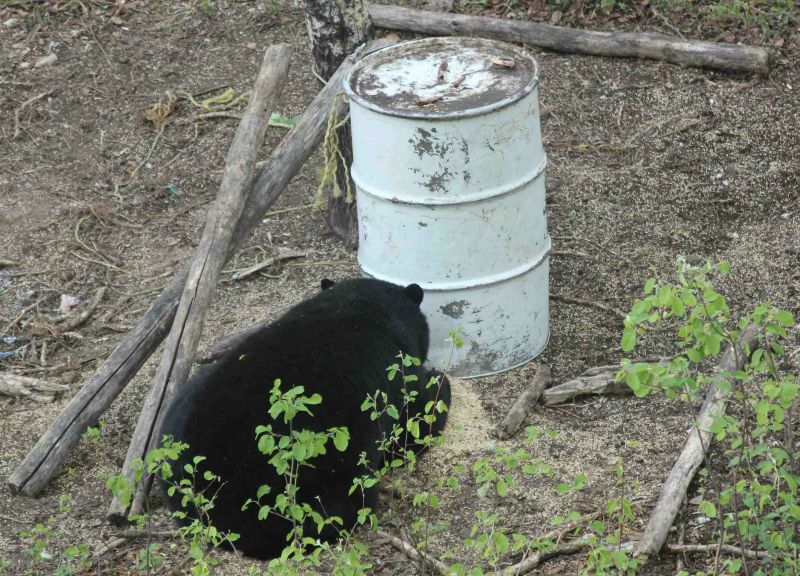
In the thick woods, bait increases the chances of a bear encounter. However, getting a mature bruin to swing by isn’t as easy as tossing some grease on the ground. Effective baiting takes work.
But baiting bears in the thick, forested north country — including states such as Maine, Idaho, Minnesota, Wisconsin and others, as well as Alaska and Canada — is really the only practical way to hunt black bears. You could sneak around every day for an entire season and never even see a bear, much less get a shot at one. And at baits you are able to choose which bear you want to shoot, making it so much easier to select a mature boar — which is what biologists want you to do.
Wild hogs — which are mostly nocturnal, even more so than bears — are running out of control in many states, destroying habitat as fast as they can root it up. Given their lightning-fast reproductive rates, the only way to have a chance at keeping their numbers under control is to hunt them over bait, with dogs or at night. With hogs, it’s as much about population control as hunting.
What About Whitetails?
Baiting whitetails is a very controversial topic to which there is no consensus even inside the hunting community. In some states it’s legal, but not in others. Then there’s Texas, where the vast majority of whitetail hunting revolves around corn feeders, at least partially. And there’s no doubt that it can affect deer movement and hunter success rates. But again, baiting does not turn hunting into a slam dunk.
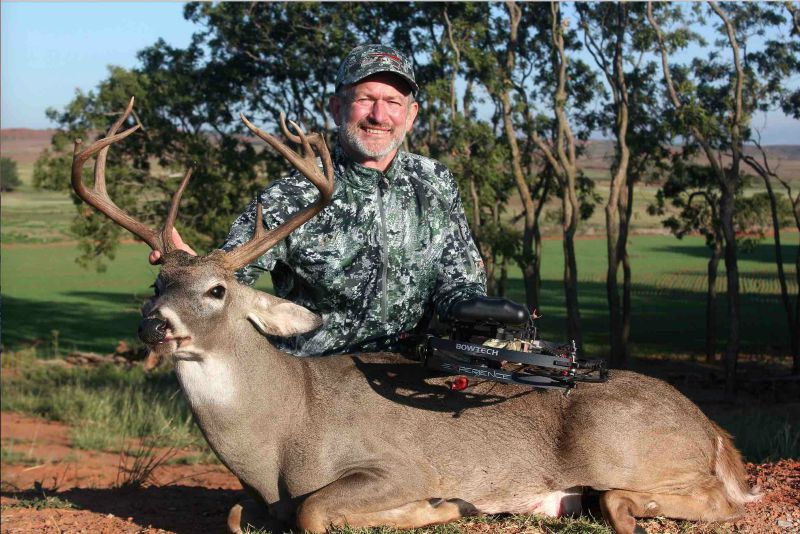 For example, most studies show baiting or using supplemental food increases nighttime visits. Examples? A 1982 Michigan study was done with a captive herd in a fairly large pen and found that a lot of feeding at supplemental food sites was at night. A 1992 Mississippi study showed 90 percent of bait station use by bucks was at night. A 1993 Texas study found that baited stand sites had fewer deer coming during the day as the season progressed, and also noted older bucks avoided bait sites as the season went on. Another study noted when small amounts of corn were used, competition for the food increased and there was more daytime use. Several studies suggest that bait piles will not cause deer to change their home range. You aren’t going to pull deer long distances to a bait pile.
For example, most studies show baiting or using supplemental food increases nighttime visits. Examples? A 1982 Michigan study was done with a captive herd in a fairly large pen and found that a lot of feeding at supplemental food sites was at night. A 1992 Mississippi study showed 90 percent of bait station use by bucks was at night. A 1993 Texas study found that baited stand sites had fewer deer coming during the day as the season progressed, and also noted older bucks avoided bait sites as the season went on. Another study noted when small amounts of corn were used, competition for the food increased and there was more daytime use. Several studies suggest that bait piles will not cause deer to change their home range. You aren’t going to pull deer long distances to a bait pile.
Speaking about hunter success, a 1984 Michigan study showed that baiters harvested 2.4 deer per 100 days hunting, while non-baiters harvested 2.2 deer per 100 days hunting. Yet even though there is no real difference there, it is for certain that hunters believe baiting helps them kill deer. A 1993 Wisconsin study, for example, showed that 92 percent of hunters felt that baiting increased their chance for success — whether they used bait or not. That same study showed 50 percent of bait hunters tagged a deer, while 54 percent of hunters who did not use bait filled their tags. The same basic result was found during a 1994 Michigan study, which found that 44 percent of hunters using bait were successful, while 52 percent of hunters who did not bait were successful.
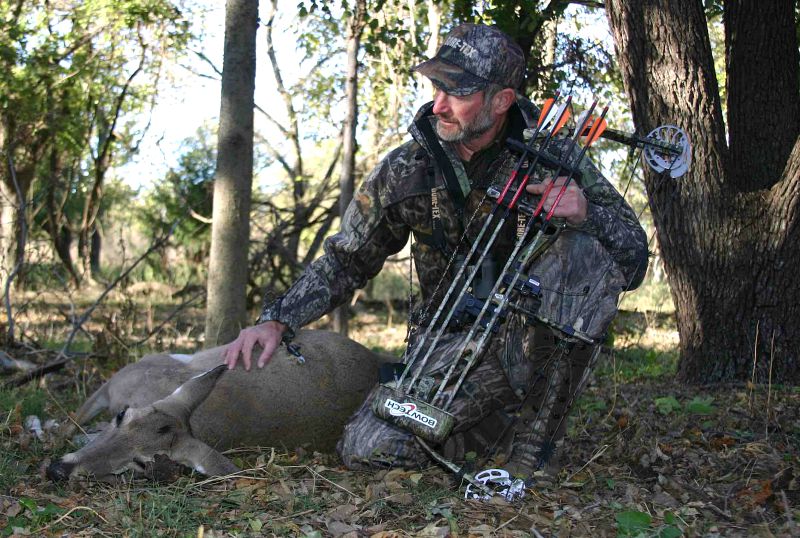 Here’s some interesting data via a large mail survey of Wisconsin gun hunters from 1998-2001 to examine both buck and doe harvests over bait. In 1998, success for does was 35.9 percent for baiters and 39.7 percent for non-baiters, while using bait produced a 26.7 percent success rate for bucks as opposed to 24.7 percent for non-baiters. In fact, over those 4 years, baiter success for bucks and for does was pretty consistent, with baiters doing just a little better than non-baiters.
Here’s some interesting data via a large mail survey of Wisconsin gun hunters from 1998-2001 to examine both buck and doe harvests over bait. In 1998, success for does was 35.9 percent for baiters and 39.7 percent for non-baiters, while using bait produced a 26.7 percent success rate for bucks as opposed to 24.7 percent for non-baiters. In fact, over those 4 years, baiter success for bucks and for does was pretty consistent, with baiters doing just a little better than non-baiters.
Interestingly, many surveys show that bowhunters using bait are a bit more successful than gun hunters. A 2001 Wisconsin survey showed that 40 percent of bowhunters used bait and 60 percent did not. Bowhunting baiters did better, with 45 percent taking a deer, while 31 percent of non-baiters took deer. Overall, though, the difference isn’t significant. One thing this survey does show is that if a hunter has control of his area and limits disturbance and human odor, then deer will use bait. Since bowhunting is a low-disturbance form of hunting, baiting works better for those hunters than for gun hunters. It also appears that for the same reasons, deer will come to bait during the day more in bow season than gun season.
Baiting Out West
In most instances baiting for big game is verboten out West — but not always. For example, Wyoming and Idaho allow baiting for bears, but the practice is strictly taboo for deer, elk and other big game. Utah is the outlier. In the Beehive State baiting for deer, elk and bear is legal, but be sure to check state game regulations for when and where it is legal. In Arizona, where I live, baiting and the use of artificial minerals are against the law, but you can use the same salt blocks ranchers use for cattle as long as cattle are present in the area. It’s the same in Colorado. In New Mexico, baiting is outlawed. In Washington, bear baiting is illegal, but according to WAC (Washington Administrative Code) 220-414-030, it is “unlawful to hunt for deer and elk using any type of bait placed, exposed, deposited, distributed, scattered, or otherwise used for the purpose of attracting deer or elk with the intent to hunt them, if the volume of bait accessible to wildlife exceeds 10 gallons. Bait sites of an individual license holder cannot be placed within 200 yards from another known bait site or another bait site of the same license holder.”
And on and on. If it seems like there is no rhyme or reason to it, you’re right. (Note: Always, even in states where baiting is legal, check state regulations before placing bait on public lands.)
What’s the Difference?
Actor Ian Somerhalder once famously said, in part, “The way to a man’s heart is through his stomach.” Paraphrasing that statement, the way to a successful hunt is through an animal’s stomach. In short, one of the very best ways to get a shot at an animal is to find out what it’s eating, locate that food source, then lay an ambush either on the food source itself or along an established travel corridor.
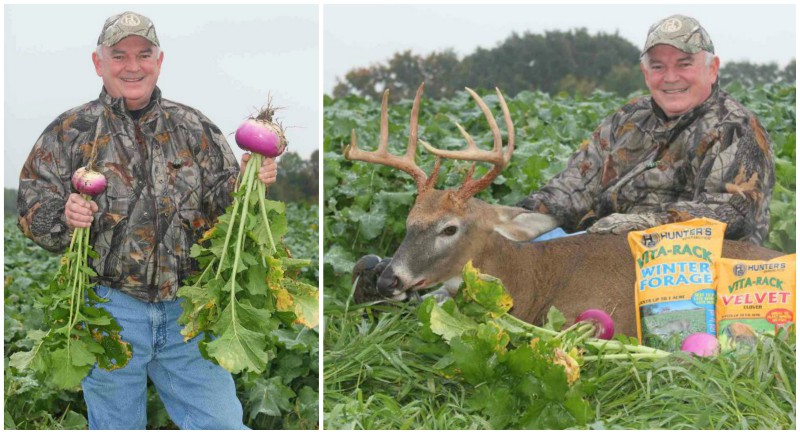
In many whitetail regions, lush food plots are the rage. In others, bowhunters prefer to sit over a feeder or placed piles of corn in an effort to attract and harvest deer.
And so, the question then becomes, what’s the difference between hunting over bait and sitting over a small, tightly managed food plot? Or a freshly harvested Midwest cornfield? Or a haystack being raided nightly by winter-stressed deer? After all, are they all not preferred food sources not natural to the landscape, and thus, not really part of what some define as fair chase hunting?
Naturally, the animal rightists and anti-hunters think so. What’s problematic is the fact that some misguided hunters think so as well.
“Denouncing baiting for predators like bears opens a philosophical door to question all methods of manipulating game behavior,” said Brian Lynn, VP Marketing & Communications, Sportsman’s Alliance (www.sportsmansalliance.org), one of the nation’s leading conservation and pro-hunting organizations. “Once an ethical method has been called into question, animal rights organizations can apply the same misplaced logic to other methods to achieve their ultimate goal of ending hunting by any means necessary.
“When the voices of hunters join the cacophony of anti- and non-hunter declarations pertaining to the evils of baiting, they are placing nearly every commonly accepted practice of habitat management at risk,” Lynn said. “For where does habitat management end and baiting and luring begin?”
What Do You Think?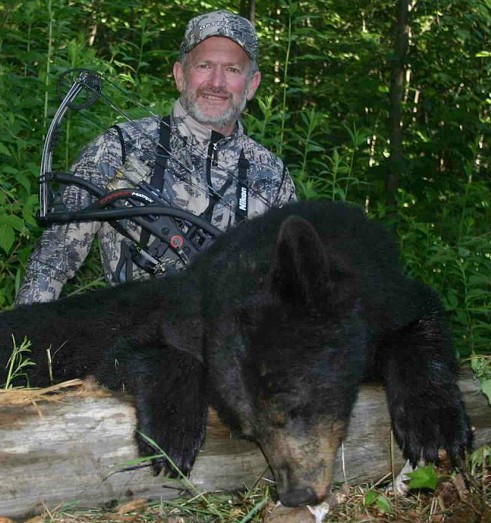
Sadly, the animal rightists aren’t the only ones who condemn hunting over bait. Some hunters do, too. It reminds me a lot of the controversy over the use of hounds for hunting bears, hogs and even deer. While the use of hounds and baiting might not be for you, both are historical hunting methods that remain legal means of take in some states and provinces. And both are used by the antis as wedge issues they can use to both splinter the ranks of hunters and as fundraising tools to stuff their coffers with donations from the uninformed.
The truth is, as long as hunters want baiting, we’ll probably always have it in some form or another. What do you think about hunting over bait? Is it an all-or-none thing for you? Have you ever done it? Drop me a note at brobb@grandviewmedia.com and share your thoughts, I’d love to hear from you!






